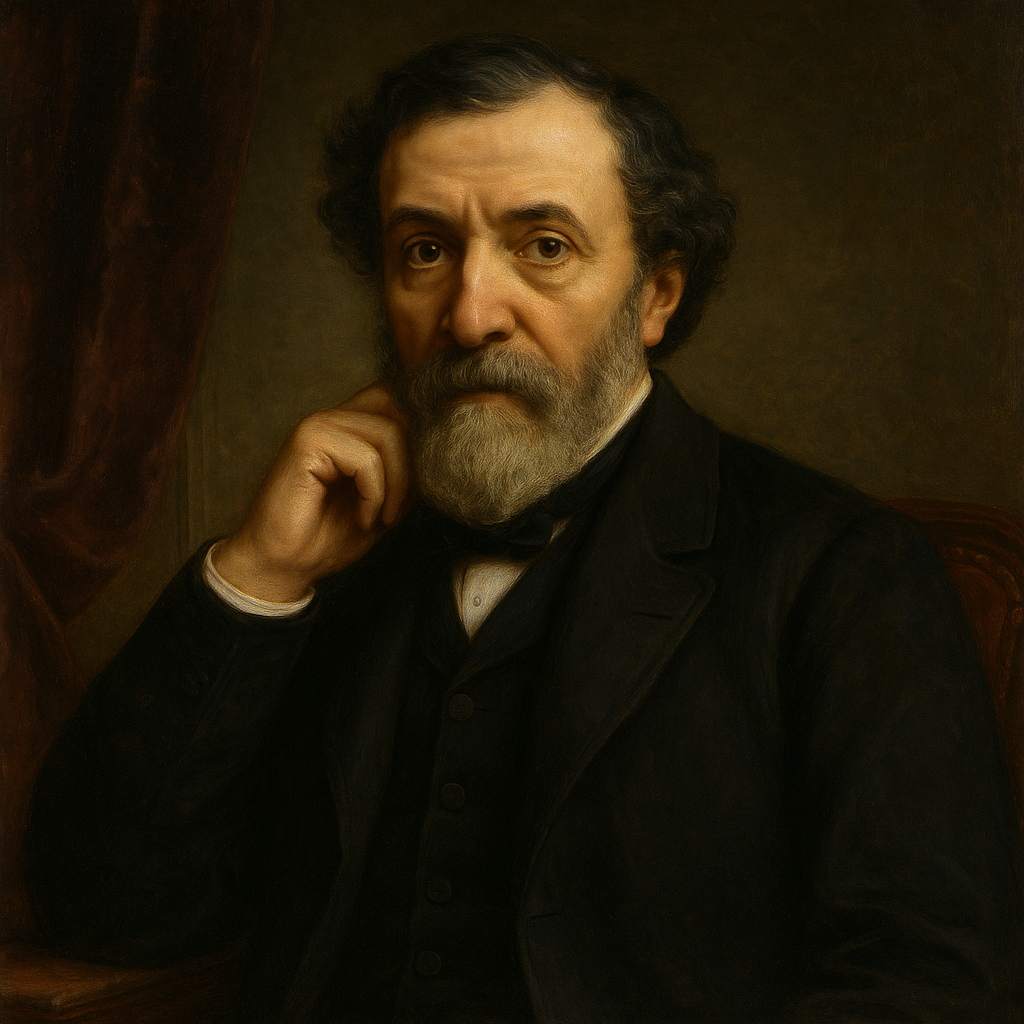Pippa's Song
Robert Browning
1812 to 1889

The year's at the spring
And day's at the morn;
Morning's at seven;
The hillside's dew-pearled;
The lark's on the wing;
The snail's on the thorn;
God's in his heaven—
All's right with the world.
Robert Browning's Pippa's Song
"Pippa's Song" by Robert Browning is one of the most celebrated lyrical fragments from his verse drama Pippa Passes (1841). This concise yet evocative poem reflects Browning’s ability to infuse a deceptively simple structure with profound thematic resonance. Spoken by Pippa, a young silk-winder in Asolo, Italy, the lines encapsulate her optimistic worldview, which carries broader philosophical implications about harmony, faith, and the human experience.
Thematic Analysis
At its core, the poem celebrates the unity of natural and divine order. Pippa's cheerful affirmation that "God's in his heaven— / All's right with the world" establishes a sense of cosmic balance. This optimism is poignant, given Pippa's modest position in society; her voice carries a universal hope that transcends individual struggles. Browning juxtaposes the cycles of nature—signified by references to the seasons, time of day, and creatures—with a faith-driven trust in divine governance. The result is a synthesis of pastoral imagery and theological affirmation.
Literary Devices and Language
-
Structure and Form
The poem consists of eight lines of iambic trimeter, a meter that lends the verse a light, songlike rhythm appropriate for its hopeful tone. The rhyme scheme is irregular, suggesting spontaneity and aligning with its role as part of a dramatic monologue. -
Imagery
Browning uses vivid natural imagery to situate Pippa’s worldview within the rhythms of the natural world:- "The year's at the spring" signifies renewal and beginnings.
- "The hillside's dew-pearled" evokes freshness and beauty, suggesting a pristine morning world. These sensory details invite readers to visualize and feel the serene harmony Pippa describes.
-
Parallelism
The repetition of "at" in "day's at the morn; / Morning's at seven" underscores the progression of time and orderliness. Each line builds upon the previous, creating a cumulative effect that mirrors the interconnectedness of life and time. -
Symbolism
- The lark is a traditional symbol of joy and the spiritual elevation associated with morning.
- The snail on the thorn contrasts the lark, symbolizing groundedness and the slow, enduring aspects of life. Together, they balance movement and stillness, further reinforcing a harmonious worldview.
-
Divine Affirmation
The culminating line, "God's in his heaven— / All's right with the world," is a powerful aphorism that transcends the immediate context. It reflects Victorian ideals of faith and order while also revealing Browning’s exploration of optimism as a conscious act of resistance to despair.
Contextual Considerations
When placed within the larger context of Pippa Passes, this song takes on additional meaning. Pippa's unwavering positivity contrasts with the morally complex and often flawed characters she encounters throughout the drama. Her song, overheard by others, inadvertently influences their actions, underscoring Browning's belief in the redemptive power of innocence and faith. Additionally, the poem reflects Victorian preoccupations with nature, progress, and spirituality, aligning with the Romantic tradition yet anticipating modernist skepticism.
Conclusion
"Pippa's Song" is a masterful encapsulation of Browning’s optimistic philosophy and his belief in the interconnectedness of the natural and divine. Through its lyrical simplicity, the poem resonates with timeless themes of renewal, order, and hope. Pippa’s affirmation remains an enduring reminder of how perspective shapes experience, encouraging readers to find solace in the balance of life’s rhythms and faith in a benevolent order.
This text was generated by AI and is for reference only. Learn more
Want to join the discussion? Reopen or create a unique username to comment. No personal details required!



Comments
No comments yet. Be the first to comment!